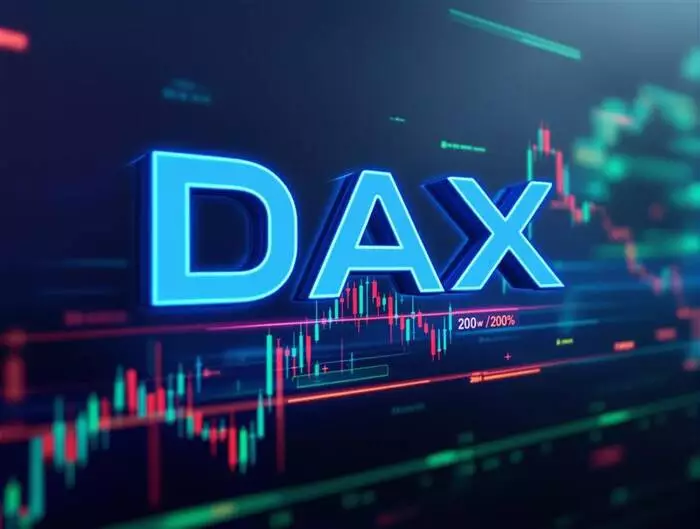In the intricate landscape of global finance, data points such as unemployment figures become more than mere statistics; they serve as signals that can sway market trajectories and influence monetary policies. The upcoming release of Eurozone unemployment data exemplifies this phenomenon. While economists anticipate stability at 6.2%, even a marginal deviation could have outsized impacts on investor confidence and risk appetite. When unemployment remains low or improves, it can bolster the case for the European Central Bank (ECB) to shift away from dovish stances, hinting at a potentially firming monetary policy. Conversely, a rise in unemployment could revive expectations of rate cuts, igniting optimism among risk takers. The core lesson here is that macroeconomic indicators act as the compass guiding central bank decisions and investor perceptions, underscoring their pivotal role in market dynamics.
Yet, amid the significance of such data, it’s crucial to question how much markets genuinely digest and act upon these numbers. Are traders reacting rationally to nuanced shifts, or are they overly sensitive to every datapoint? The answer leans toward the latter, illustrating how psychological biases and herd behavior often amplify market moves. Investors should recognize that while economic statistics are vital, they form just one piece of a much larger puzzle that includes geopolitical developments, trade tensions, and central bank rhetoric.
The Ripple Effect: US Federal Reserve’s Messaging and Its Market Implications
Turning to the United States, the spotlight is on the Federal Reserve, specifically Chair Jerome Powell’s nuanced commentary. His cautious avoidance of definitive rate cut timelines demonstrates a deliberate strategy of data dependency. Powell’s statement that officials are monitoring inflation signals closely underscores a central theme in modern monetary policy: responsiveness, rather than rigidity. While the market remains remarkably optimistic about a September rate cut—probability estimates from CME FedWatch hover stubbornly above 90%—the subtle shifts in sentiment reveal a more complex reality.
The instability and ambiguity in the Fed’s communication reflect an underlying tension. On one hand, economic data such as booming employment figures could push policymakers toward tightening; on the other, signs of labor market softness or inflation fears could prompt the opposite. This grey zone presents opportunities for market players to recalibrate their positions dynamically. The upcoming employment report, like a litmus test, is poised to either validate or challenge prevailing expectations. A stronger-than-anticipated jobs report might dampen prospects of rate cuts, leading to corrections in risk assets—particularly equities like the Nasdaq and S&P 500. Conversely, weaker data could reinforce dovish outlooks, propelling stocks higher.
This interplay highlights an essential truth: monetary policy is no longer a deterministic force but a dance of narratives, data, and psychology. The Fed’s cautious tone does not nullify market expectations but introduces a layer of complexity that traders must navigate with agility and discernment.
Market Outlook: Navigating Opportunities and Risks
The immediate outlook for markets, especially indices like the DAX, hinges on a delicate balance of foreign trade developments, US labor data, and central bank signals. The technical positioning of the DAX offers a narrative of cautious optimism. With futures signaling positive momentum, the index seems poised for a potential breakout above recent resistance levels around 23,750. A sustained move beyond this barrier could open the door to new highs, possibly reaching toward June’s peak of 24,041 and beyond. Such a move would be a testament to bullish strength and an affirmation of confidence in the economic outlook.
However, prudent investors remain wary of downside risks. If US-EU trade tensions escalate or if the US economy surprises on the upside with unexpectedly strong growth, the DAX could face headwinds. A decline below key technical support levels like 23,500 or even the 50-day EMA could trigger a deeper correction toward 23,000—a psychologically significant level that could usher in bears and short-term volatility. The Relative Strength Index (RSI) underscores this cautious optimism, suggesting room for growth before overbought conditions become a concern.
In this environment, market participants must maintain a flexible, dual-pronged approach: capitalize on bullish opportunities while vigilantly monitoring geopolitical developments and macroeconomic releases. The market’s future will continue to be shaped by the confluence of economic data, central bank narratives, and international trade talks—a complex web that offers both risks and rewards for those attentive enough to decode its signals.
—
By critically analyzing these interconnected elements, it becomes clear that financial markets are a living organism, driven as much by sentiment and expectations as by hard data. The ability to interpret these signals effectively — and to understand their implications in a broader context — is what separates savvy investors from the rest. As the world navigates a period of persistent uncertainty, strategic agility and analytical rigor will be the most valuable tools for unlocking market potential.

